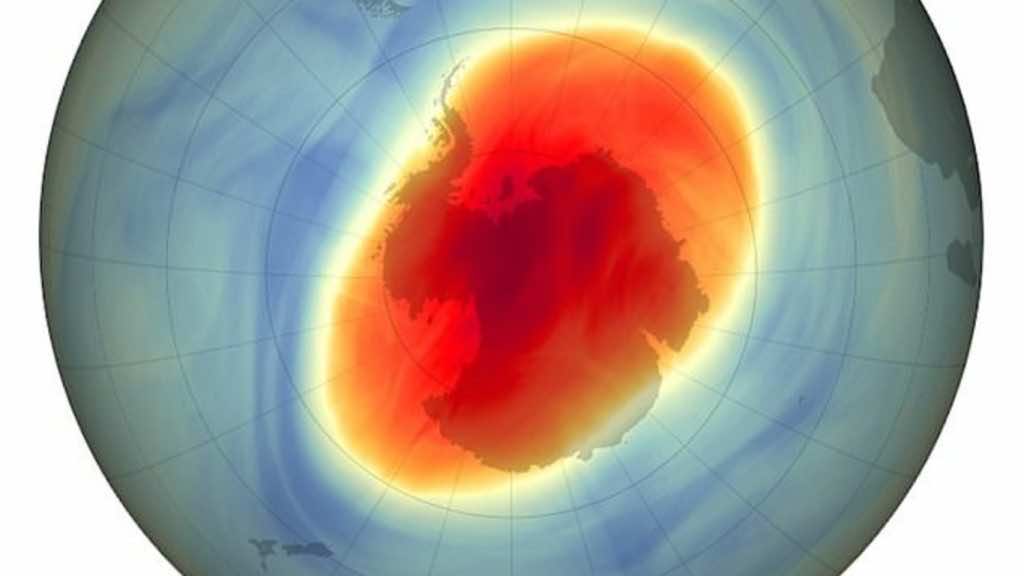NASA announced last month that the ozone hole over the South Pole has been reduced by 700,000 square miles which is a ray of light in the dark.
The closing is attributed to the Montreal Protocol, a treaty adopted 35 years ago to restrict the release of harmful ozone-depleting chemicals called chlorofluorocarbons, or CFCs, used in aerosols.
Paul Newman, chief scientist for Earth sciences at NASA’s Goddard Space Flight Center in Greenbelt, Maryland, said in a statement: ‘Over time, steady progress is being made, and the hole is getting smaller.
‘We see some wavering as weather changes and other factors make the numbers wiggle slightly from day to day and week to week. But overall, we see it decreasing through the past two decades. The elimination of ozone-depleting substances through the Montreal Protocol is shrinking the hole.’
Researchers at NASA and NOAA detect and measure the growth of the ozone hole with instruments on the Aura, Suomi NPP, and NOAA-20 satellites.
Scientists were worried about potential stratospheric impacts from the January 2022 eruption of the Hunga Tonga-Hunga Ha’apai volcano. However, no direct effects from Hunga Tonga have been detected in the Antarctic stratospheric data.
The treaty was brought forward after a giant hole in the ozone layer appeared in the early 1980s.
Without the Montreal Protocol, researchers said we would have been living in a ‘scorched Earth,’ according to a 2021 study.
Banning the chemicals protected the climate in two ways, the research found.
The practice restricted the spread of the greenhouse effect and kept plants from damaging increases in ultraviolet radiation (UV) by protecting the ozone layer.
If the treaty had not happened, we would have experienced a global collapse in the ozone layer by the 2040s and 60 percent less ozone above the tropics by 2100.
The strength of the UV from the Sun in mid-latitudes includes most of Europe including the UK, US, and central Asia, and New Zealand. It would be stronger than the present-day tropics by 2050.
The depleted ozone layer would have seen the planet, and its vegetation, exposed to far more of the Sun’s UV.

